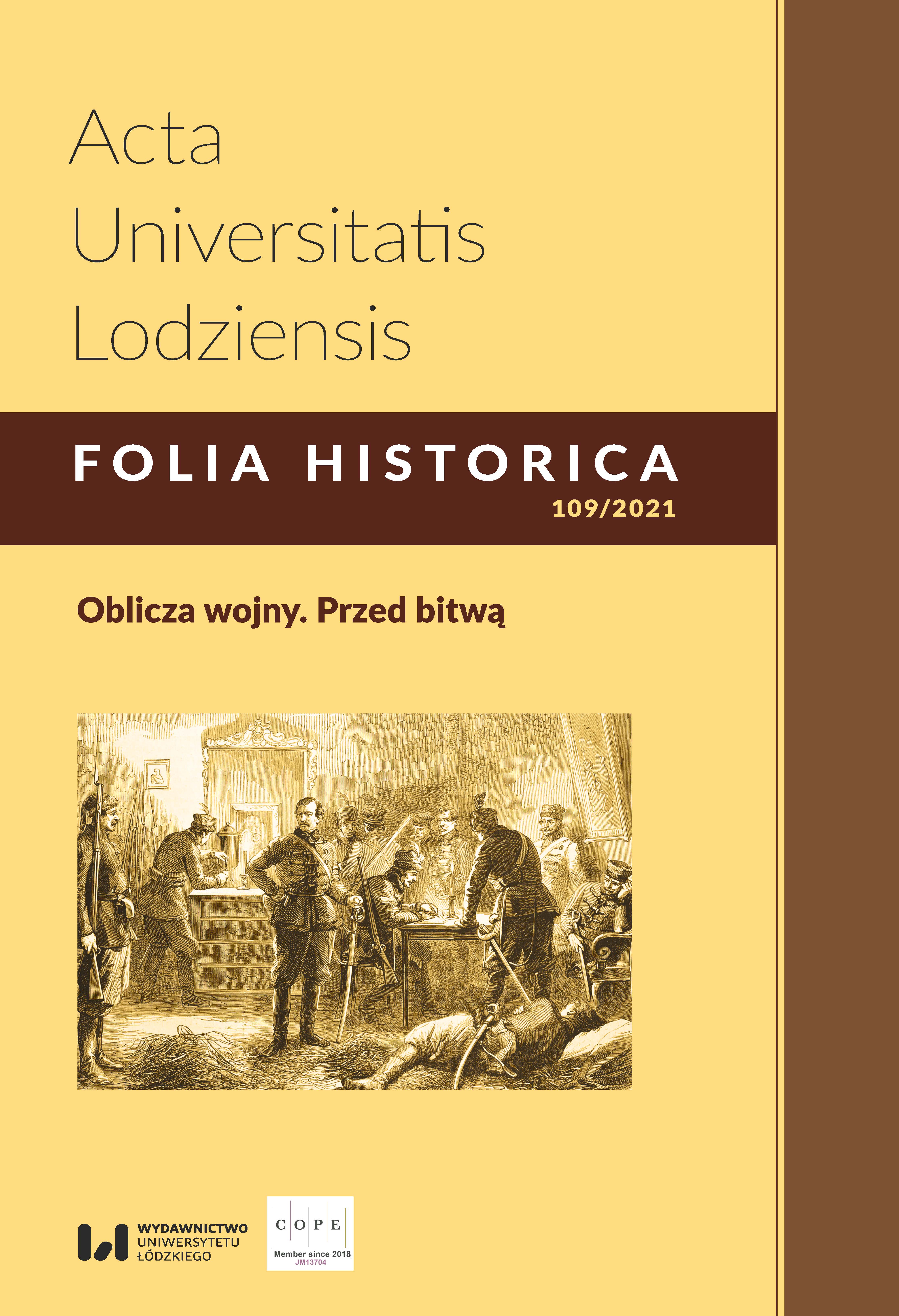„Moi Panowie, jedziemy na manewry!” Przygotowanie zmotoryzowanych oddziałów armii austro-węgierskiej do działań wojennych
DOI:
https://doi.org/10.18778/0208-6050.109.05Słowa kluczowe:
armia, Austro-Węgry, motoryzacja, manewry wojskoweAbstrakt
Wraz z pojawieniem się w kręgu zainteresowań wojskowych elit pojazdów mechanicznych uruchomiony został cały zestaw działań mających na celu wprowadzenie ich do służby wojskowej. Mechanizm działania podobny był we wszystkich armiach świata. Różnice polegały tylko na ich intensywności. Po pierwszych testach i szkoleniach kadry najważniejszym sprawdzianem było użycie samochodów i motocykli w trakcie manewrów. To one pozwalały w najpełniejszy sposób sprawdzić zarówno same pojazdy, stopień wyszkolenia kadry, jak też ich współgranie z niezmotoryzowanymi formacjami.
W monarchii austro-węgierskiej pierwsze testy samochodów miały miejsce jeszcze pod koniec XIX w. W 1896 r. sprawdzano samochód osobowy, a w 1898 przeprowadzono długotrwałe próby pierwszego samochodu ciężarowego. Po tych pierwszych testach samochody zaczęły rokrocznie brać udział w różnego szczebla manewrach wojskowych. Z przyczyn oczywistych najwięcej ich pojawiało się na organizowanych co roku manewrach cesarskich.
Motorem napędowym motoryzacji armii austro-węgierskiej był Robert Wolf, oficer artylerii oddelegowany w 1904 r. do kierowania nowo utworzonym Wydziałem Samochodowym przy Komitecie Wojskowo-Technicznym. To z jego inicjatywy doszło do testowania najważniejszych rozwiązań technicznych: samochodu wyposażonego w wyciągarkę linową jego pomysłu, tzw. pociągów drogowych, pojazdów z napędem na wszystkie osie, oraz pierwszego samochodu pancernego skonstruowanego w wiedeńskich zakładach Daimlera.
Mimo tych wszystkich starań ostatecznie armia austro-węgierska przystąpiła do działań wojennych w 1914 r. bez odpowiednio zmotoryzowanych oddziałów. Przyczyn takiego stanu było wiele, ale podstawowym wydaje się niechęć do pojazdów mechanicznych znaczącej części elit wojskowych oraz wysokie koszty związane z zakupem oraz eksploatacją samych pojazdów.
Pobrania
Bibliografia
Stavenhagen W., Der gleislose Kraftwagen in militärischer Beleuchtung. Für Offiziere aller Waffen des Heeres, der Marine und der Schutz-Truppen, Oldenburg i. Gr. 1908.
Google Scholar
„Allgemeine Automobil-Zeitung” 1900, 1902–1911, 1913.
Google Scholar
„Czas” 1901.
Google Scholar
„Głos Rzeszowski” 1909.
Google Scholar
„Kurier Lwowski” 1900, 1906, 1909.
Google Scholar
„Nowości Ilustrowane” 1905.
Google Scholar
„Offizielle Mitteilungen des Österreichischen Automobil-Club” 1906, 1908.
Google Scholar
Augustowski J., Wojska samochodowe w Austrii, Niemczech i Rosji podczas wojny światowej, „Bellona” 1932.
Google Scholar
Ludvigsten K., Ferdinand Porsche. Ulubiony inżynier Hitlera, przekł. G. Siwek, Warszawa 2021.
Google Scholar
Spielberger W. J., Kraftfahrzeuge und Panzer des Österreichischen Heeres 1896 bis heute, Stuttgart 1976.
Google Scholar
Pobrania
Opublikowane
Jak cytować
Numer
Dział
Licencja

Utwór dostępny jest na licencji Creative Commons Uznanie autorstwa – Użycie niekomercyjne – Bez utworów zależnych 4.0 Międzynarodowe.











